-
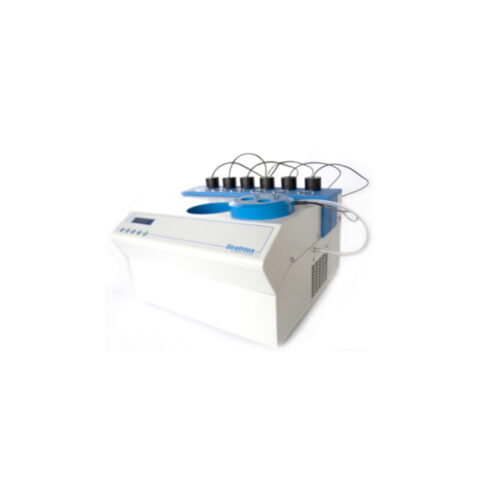 The SI500 Strathtox is the latest precision respirometer for rapidly measuring actual Activated Sludge bacterial performance. Applications in - Toxicity Management - Nitrification Management - Critical Oxygen Point analysis - Aeration Efficiency - Nutrient Control - Sludge Health - System Trouble-shooting - Short-term BOD - Plant capacity - Respiration tests
The SI500 Strathtox is the latest precision respirometer for rapidly measuring actual Activated Sludge bacterial performance. Applications in - Toxicity Management - Nitrification Management - Critical Oxygen Point analysis - Aeration Efficiency - Nutrient Control - Sludge Health - System Trouble-shooting - Short-term BOD - Plant capacity - Respiration tests -
 With the magnetic suspension balance LINSEIS MSB PT 1, gravimetric measurements in a wide temperature and pressure range and under aggressive media can be done. Such a magnetic suspension balance consist of: a balance for recording the measurement values, a suspension coupling which carries the weight of the sample, a sensor for the position measurement of the levitation part a control unit to control the suspension coupling The contact-less transmission of the sample weight is realized with a levitation magnet and a holding magnet. The levitation magnet consists of a permanent magnet and the holding magnet consists of an electromagnet hanging on the balance. The position sensor delivers the actual position of the levitation magnet and the PID controller makes a stable levitation position with the electromagnetic force as the actuating variable. Through the magnetic coupling a micro balance can be set up at environmental condition. Therefore the balance is protected from high temperatures, pressure and aggressive media.
With the magnetic suspension balance LINSEIS MSB PT 1, gravimetric measurements in a wide temperature and pressure range and under aggressive media can be done. Such a magnetic suspension balance consist of: a balance for recording the measurement values, a suspension coupling which carries the weight of the sample, a sensor for the position measurement of the levitation part a control unit to control the suspension coupling The contact-less transmission of the sample weight is realized with a levitation magnet and a holding magnet. The levitation magnet consists of a permanent magnet and the holding magnet consists of an electromagnet hanging on the balance. The position sensor delivers the actual position of the levitation magnet and the PID controller makes a stable levitation position with the electromagnetic force as the actuating variable. Through the magnetic coupling a micro balance can be set up at environmental condition. Therefore the balance is protected from high temperatures, pressure and aggressive media. -
 The Linseis TGA PT 1600 for thermogravimetric applications is a toploading Thermobalance, which offers a highly userfriendly design. Even at a sample weight of up to 5/25g the tara is done electronically. The specially designed furnaces allow fast heating and cooling rates as well as a highly precise temperature control. The system can be optionally equipped with a coupling device for EGA (Evolved Gas Analysis). The instrument is highly suitable for thermal composition, thermal stability and oxidation studies. The (optional) calculated DTA signal provides important additional information regarding endothermal or exothermal reactions. Furthermore it can be used as a tool for temperature calibration.
The Linseis TGA PT 1600 for thermogravimetric applications is a toploading Thermobalance, which offers a highly userfriendly design. Even at a sample weight of up to 5/25g the tara is done electronically. The specially designed furnaces allow fast heating and cooling rates as well as a highly precise temperature control. The system can be optionally equipped with a coupling device for EGA (Evolved Gas Analysis). The instrument is highly suitable for thermal composition, thermal stability and oxidation studies. The (optional) calculated DTA signal provides important additional information regarding endothermal or exothermal reactions. Furthermore it can be used as a tool for temperature calibration. -
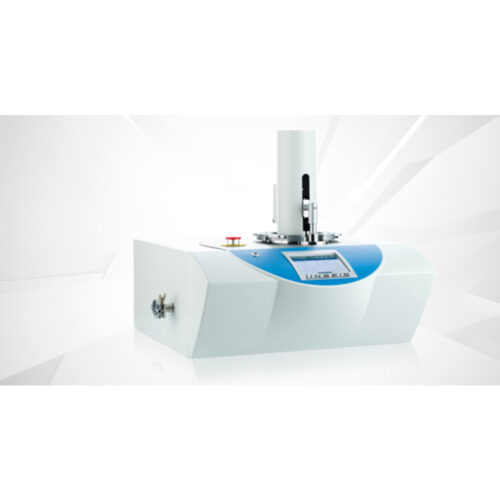 The Linseis TGA PT1000 for thermogravimetric applications is a toploading Thermobalance, which offers a highly userfriendly design. Even at a sample weight of up to 5g the tara is done electronically. The specially designed furnaces allow fast heating and cooling rates from 0.001 up to 250°C/min as well as a highly precise temperature control from (10°C) RT up to 1100°C. The system can be optionally equipped with a coupling device for EGA (Evolved Gas Analysis). The instrument is highly suitable for thermal composition, thermal stability and oxidation studies. The (optional) calculated DTA signal provides important additional information regarding endothermal or exothermal reactions. Furthermore it can be used as a tool for temperature calibration. Linseis automation system: An optional 42 position sample robot in combination with the optional automatic gas control and automatic evacuating system enables long term unattended operation. For an even higher throughput, a sample robot for up to 84 positions is also available.
The Linseis TGA PT1000 for thermogravimetric applications is a toploading Thermobalance, which offers a highly userfriendly design. Even at a sample weight of up to 5g the tara is done electronically. The specially designed furnaces allow fast heating and cooling rates from 0.001 up to 250°C/min as well as a highly precise temperature control from (10°C) RT up to 1100°C. The system can be optionally equipped with a coupling device for EGA (Evolved Gas Analysis). The instrument is highly suitable for thermal composition, thermal stability and oxidation studies. The (optional) calculated DTA signal provides important additional information regarding endothermal or exothermal reactions. Furthermore it can be used as a tool for temperature calibration. Linseis automation system: An optional 42 position sample robot in combination with the optional automatic gas control and automatic evacuating system enables long term unattended operation. For an even higher throughput, a sample robot for up to 84 positions is also available. -
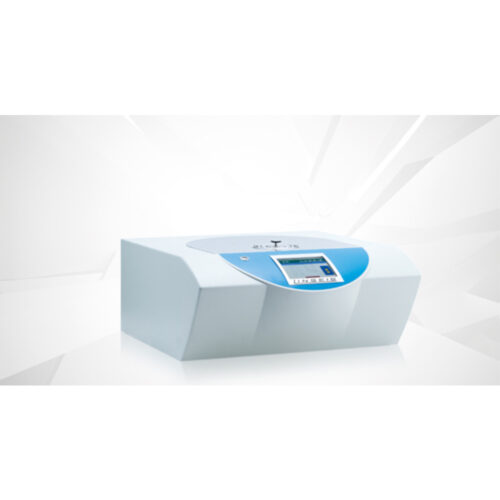 The DSC PT 1000 was developed to provide a general purpose TM – DSC with a broad temperature range (-180 – 600°C) for all common applications. Furthermore emphasis was placed on an extremely stable baseline and high reproducibility. The design allows manual and automatic operation. The conception of the cell guarantees maximum mechanical and chemical resistance. The key part of every DSC is the sensor, so don’t make any compromise. Up to now it has been impossible to achieve highest resolution and sensitivity in one sensor. The revolutionary design of the HiperRes® Sensor line now enables just that. The Ceramic/Metal Sensor deliver outstanding resolution in combination with superior reproducibility.
The DSC PT 1000 was developed to provide a general purpose TM – DSC with a broad temperature range (-180 – 600°C) for all common applications. Furthermore emphasis was placed on an extremely stable baseline and high reproducibility. The design allows manual and automatic operation. The conception of the cell guarantees maximum mechanical and chemical resistance. The key part of every DSC is the sensor, so don’t make any compromise. Up to now it has been impossible to achieve highest resolution and sensitivity in one sensor. The revolutionary design of the HiperRes® Sensor line now enables just that. The Ceramic/Metal Sensor deliver outstanding resolution in combination with superior reproducibility. -
 The Chip-DSC 100 combines the advantages of chip technology with the requirements of our previous DSC models. Various options such as a sample robot, UV attachment and Raman spectroscopy transform the Chip-DSC 100 into a highly versatile measuring instrument. The arrangement of the Chip-Sensor allows superior reproducibility and due to the low mass outstanding temperature control and heating rates of up to 1000 K/min. The integrated sensor is easily user exchangeable and available for a low cost. The integrated design of the chip-sensor delivers superior raw data, which enables a direct analysis without pre- or post-processing of heat flow data. Applications on the Chip-DSC 100 can be expanded with various accessories. You can use different cooling systems in combination with a sample robot. The sample robot is available with 96 positions.
The Chip-DSC 100 combines the advantages of chip technology with the requirements of our previous DSC models. Various options such as a sample robot, UV attachment and Raman spectroscopy transform the Chip-DSC 100 into a highly versatile measuring instrument. The arrangement of the Chip-Sensor allows superior reproducibility and due to the low mass outstanding temperature control and heating rates of up to 1000 K/min. The integrated sensor is easily user exchangeable and available for a low cost. The integrated design of the chip-sensor delivers superior raw data, which enables a direct analysis without pre- or post-processing of heat flow data. Applications on the Chip-DSC 100 can be expanded with various accessories. You can use different cooling systems in combination with a sample robot. The sample robot is available with 96 positions. -
 The all new Chip-DSC 10 integrates all essential parts of DSC: furnace, sensor and electronics in a miniaturized housing. The chip-arrangement comprises the heater and temperature sensor in a chemically inert ceramic arrangement with metallic heater and temperature sensor. This arrangement allows superior reproducibility and due to the low mass outstanding temperature control and heating rates of up to 300 K/min. The integrated sensor is easily user exchangeable and available for a low cost. https://www.youtube.com/watch?v=07XKWG_aEoc
The all new Chip-DSC 10 integrates all essential parts of DSC: furnace, sensor and electronics in a miniaturized housing. The chip-arrangement comprises the heater and temperature sensor in a chemically inert ceramic arrangement with metallic heater and temperature sensor. This arrangement allows superior reproducibility and due to the low mass outstanding temperature control and heating rates of up to 300 K/min. The integrated sensor is easily user exchangeable and available for a low cost. https://www.youtube.com/watch?v=07XKWG_aEoc -
 The all new Chip-DSC 1 integrates all essential parts of DSC: furnace, sensor and electronics in a miniaturized housing. The chip-arrangement comprises the heater and temperature sensor in a chemically inert ceramic arrangement with metallic heater and temperature sensor. This arrangement allows superior reproducibility and due to the low mass outstanding temperature control and heating rates of up to 100 K/min. The integrated sensor is easily user exchangeable and available for a low cost. The integrated design of the chip-sensor delivers superior raw data, which enables a direct analysis without pre- or post-processing of heat flow data. The compact construction, leads to a significant reduction in production cost which can be passed on to our customers. The low energy consumption and unrivaled dynamic response result in unsurpassed performance of this revolutionary DSC-concept.
The all new Chip-DSC 1 integrates all essential parts of DSC: furnace, sensor and electronics in a miniaturized housing. The chip-arrangement comprises the heater and temperature sensor in a chemically inert ceramic arrangement with metallic heater and temperature sensor. This arrangement allows superior reproducibility and due to the low mass outstanding temperature control and heating rates of up to 100 K/min. The integrated sensor is easily user exchangeable and available for a low cost. The integrated design of the chip-sensor delivers superior raw data, which enables a direct analysis without pre- or post-processing of heat flow data. The compact construction, leads to a significant reduction in production cost which can be passed on to our customers. The low energy consumption and unrivaled dynamic response result in unsurpassed performance of this revolutionary DSC-concept. -
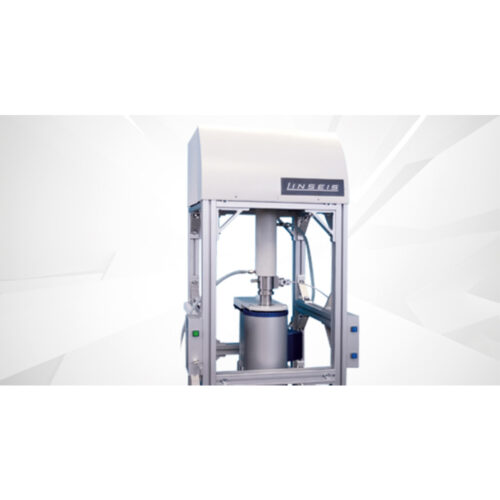 With the magnetic suspension balance LINSEIS MSB PT 1, gravimetric measurements in a wide temperature and pressure range and under aggressive media can be done. Such a magnetic suspension balance consist of a balance for recording the measurement values, a suspension coupling which carries the weight of the sample, a sensor for the position measurement of the levitation part and a control unit to control the suspension coupling. The contact-less transmission of the sample weight is realized with a levitation magnet and a holding magnet. The levitation magnet consists of a permanent magnet and the holding magnet consists of an electromagnet hanging on the balance. The position sensor delivers the actual position of the levitation magnet and the PID controller makes a stable levitation position with the electromagnetic force as the actuating variable. Through the magnetic coupling a micro balance can be set up at environmental condition. Therefore the balance is protected from high temperatures, pressure and aggressive media. With the magnetic suspension balance dimensions like
With the magnetic suspension balance LINSEIS MSB PT 1, gravimetric measurements in a wide temperature and pressure range and under aggressive media can be done. Such a magnetic suspension balance consist of a balance for recording the measurement values, a suspension coupling which carries the weight of the sample, a sensor for the position measurement of the levitation part and a control unit to control the suspension coupling. The contact-less transmission of the sample weight is realized with a levitation magnet and a holding magnet. The levitation magnet consists of a permanent magnet and the holding magnet consists of an electromagnet hanging on the balance. The position sensor delivers the actual position of the levitation magnet and the PID controller makes a stable levitation position with the electromagnetic force as the actuating variable. Through the magnetic coupling a micro balance can be set up at environmental condition. Therefore the balance is protected from high temperatures, pressure and aggressive media. With the magnetic suspension balance dimensions like- sorption,diffusion,
- surface tension,and density can be measured easily.
- Furthermore chemical reactions e.g.
- corrosion
- decomposition,and combustion will be recorded
- and production processes can be simulated (coating, polymerisation, dehydration, etc.).
-
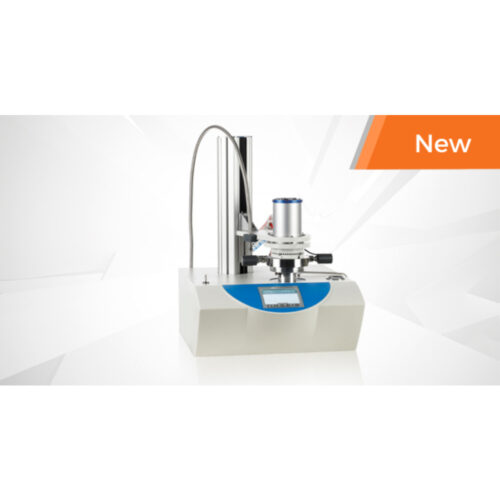 Linseis introduced the all new STA HP 3 (TGA+DSC) table top high pressure thermogravimetric, simultaneous thermal analysis instrument. The STA HP 3 is the result of 25 years of experience thermal analysis under high pressure. The superior high speed micro-furnace with a maximum temperature of 1200°C, top loading microbalance, true TG-DSC Thermogravimetry-differential scanning calorimetry design permit exiting new opportunities. The table top design, optional vapor generator and different gas dosing systems provides utmost flexibility. Worlds only top loading combined TG-DSC (Thermogravimeter and Differential Scanning Calorimeter). For experiments up to 1200°C and up to 150 bar in reactive or inert atmospheres. Easy user exchangeable TGA or TG-DSC plug and play sensors. The right choice for any given experiment gives you the flexibility to analyze TGA only experiments with volumes up to 1 ml or combined TGA-DSC analysis with up to 0.12 or 0.3 ml volume. TG-DSC Thermogravimetry-differential scanning calorimetry arrangement permits the combined analysis of weight change and caloric events like endothermal or exothermal reactions or phase transitions in one run and under the same temperature, gas and pressure conditions.
Linseis introduced the all new STA HP 3 (TGA+DSC) table top high pressure thermogravimetric, simultaneous thermal analysis instrument. The STA HP 3 is the result of 25 years of experience thermal analysis under high pressure. The superior high speed micro-furnace with a maximum temperature of 1200°C, top loading microbalance, true TG-DSC Thermogravimetry-differential scanning calorimetry design permit exiting new opportunities. The table top design, optional vapor generator and different gas dosing systems provides utmost flexibility. Worlds only top loading combined TG-DSC (Thermogravimeter and Differential Scanning Calorimeter). For experiments up to 1200°C and up to 150 bar in reactive or inert atmospheres. Easy user exchangeable TGA or TG-DSC plug and play sensors. The right choice for any given experiment gives you the flexibility to analyze TGA only experiments with volumes up to 1 ml or combined TGA-DSC analysis with up to 0.12 or 0.3 ml volume. TG-DSC Thermogravimetry-differential scanning calorimetry arrangement permits the combined analysis of weight change and caloric events like endothermal or exothermal reactions or phase transitions in one run and under the same temperature, gas and pressure conditions. -
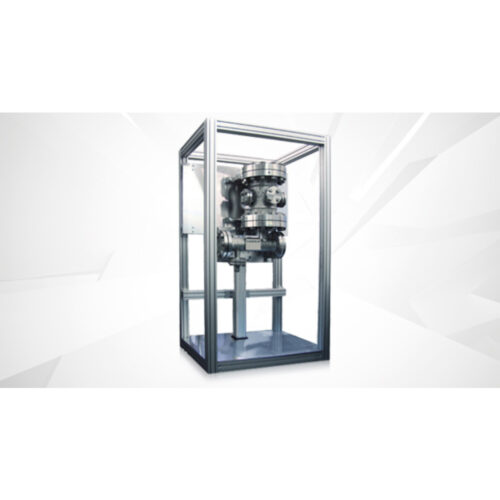 The LINSEIS High Pressure STA ( High pressure Tg-DSC) delivers unsurpassed performance. The system can be used to determine simultaneous changes of mass (TG) and caloric reactions (HDSC) under defined atmosphere and high pressure (up to 50/150 bar) in the temperature range -170°C up to 1800°C. This instrument is unique because it is the only available high pressure TG-DSC worldwide. The unique characteristics of this product are high precision, high resolution and long term drift stability. The high pressure STA Platinum Series was developed to meet the challenging demands of the high temperature and high pressure applications. Main Application of High Pressure Thermogravimetry-Differential Scanning Calorimetry:
The LINSEIS High Pressure STA ( High pressure Tg-DSC) delivers unsurpassed performance. The system can be used to determine simultaneous changes of mass (TG) and caloric reactions (HDSC) under defined atmosphere and high pressure (up to 50/150 bar) in the temperature range -170°C up to 1800°C. This instrument is unique because it is the only available high pressure TG-DSC worldwide. The unique characteristics of this product are high precision, high resolution and long term drift stability. The high pressure STA Platinum Series was developed to meet the challenging demands of the high temperature and high pressure applications. Main Application of High Pressure Thermogravimetry-Differential Scanning Calorimetry:- Pyrolysis Studies
- Gasification of Coal and Biomass
- Testing of Getter Materials (O2, H2, etc.)
- Metal reduction / oxidation studies
-
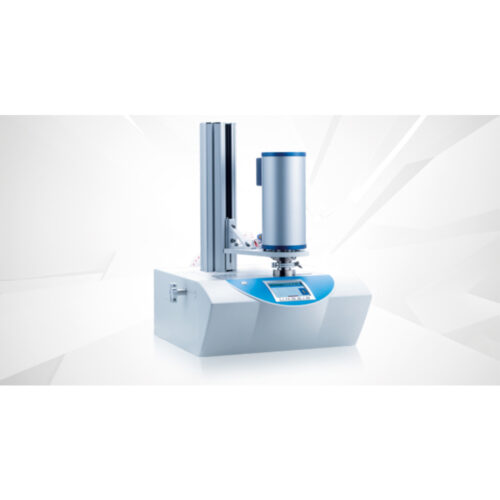 The Differential Thermal Analysis is the most common thermal analysis method due to its wide range of information provided. The Linseis high temperature DTA PT 1600 is designed to deliver highest calorimetric sensitivity, short time constants and a condensation free sample chamber. These features guarantee superior resolution and baseline stability over the entire instrument lifetime. Thus providing a indispensable tool for material development, R&D and quality control. All Linseis Differential Thermal Analyzers (DTA) comprise the advantages of latest technology, highest resolution and a robust easy to use instrument design.
The Differential Thermal Analysis is the most common thermal analysis method due to its wide range of information provided. The Linseis high temperature DTA PT 1600 is designed to deliver highest calorimetric sensitivity, short time constants and a condensation free sample chamber. These features guarantee superior resolution and baseline stability over the entire instrument lifetime. Thus providing a indispensable tool for material development, R&D and quality control. All Linseis Differential Thermal Analyzers (DTA) comprise the advantages of latest technology, highest resolution and a robust easy to use instrument design. -
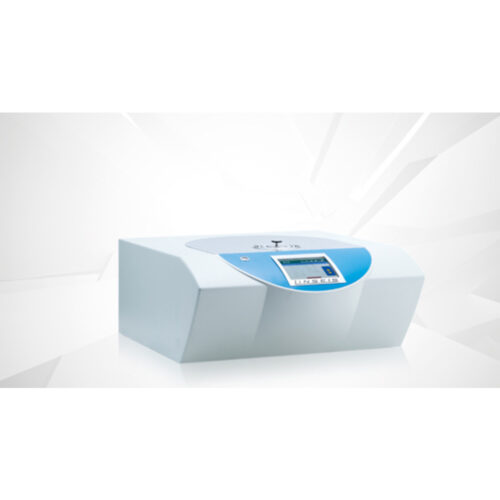 The STA PT 1000 is dedicated to analysis of organic materials in a relatively low temperature range up to 1000°C. The TG-DSC is a top loading Thermobalance, which offers a highly user-friendly design. Even at a sample weight of up to 10g the Tara is done electronically. The specially designed furnaces allow fast heating and cooling rates as well as a highly precise temperature control. The system can be optionally equipped with a coupling device for EGA (Evolved Gas Analysis). The instrument is highly suitable for thermal composition, thermal stability and oxidation studies. Features
The STA PT 1000 is dedicated to analysis of organic materials in a relatively low temperature range up to 1000°C. The TG-DSC is a top loading Thermobalance, which offers a highly user-friendly design. Even at a sample weight of up to 10g the Tara is done electronically. The specially designed furnaces allow fast heating and cooling rates as well as a highly precise temperature control. The system can be optionally equipped with a coupling device for EGA (Evolved Gas Analysis). The instrument is highly suitable for thermal composition, thermal stability and oxidation studies. Features- Top Loading sub microgram balance
- Temperature range RT up to 1000°C (Sample Temp.)
- Exchangeable measuring systems TG – DTA/DSC
- An optional 42/84 position sample robot in combination with the optional automatic gas
- control and automatic evacuating system enables long term unattended operation.
-
 Differential Scanning Calorimetry (DSC) is the most common thermal analysis method due to its wide range of information provided. The LINSEIS high temperature DSC PT 1600 (HDSC/DTA) is designed to deliver highest calorimetric sensitivity, short time constants and a condensation free sample chamber. These features guarantee superior resolution and baseline stability over the entire instrument lifetime. This provides an indispensable tool for material development, R&D and quality control. The modular concept of the HDSC and DTA systems allows the use of different furnaces with a temperature range from -150°C up to 1750°C. The vacuum tight design enables quantitative enthalpy and Cp (Specific Heat) determination under the cleanest atmospheres and under vacuum of 10E-5mbar. The systems can be upgraded with an optional sample robot and coupled to a MS or FTIR. Measuring System: User friendly exchangeable measureing systems such as a DTA Sensor and two different DSC Sensors are available. Each DSC Sensor is available as type E, K, S, B for the DSC PT 1600. This allows the perfect chioce for any application, temperature or atmosphere.
Differential Scanning Calorimetry (DSC) is the most common thermal analysis method due to its wide range of information provided. The LINSEIS high temperature DSC PT 1600 (HDSC/DTA) is designed to deliver highest calorimetric sensitivity, short time constants and a condensation free sample chamber. These features guarantee superior resolution and baseline stability over the entire instrument lifetime. This provides an indispensable tool for material development, R&D and quality control. The modular concept of the HDSC and DTA systems allows the use of different furnaces with a temperature range from -150°C up to 1750°C. The vacuum tight design enables quantitative enthalpy and Cp (Specific Heat) determination under the cleanest atmospheres and under vacuum of 10E-5mbar. The systems can be upgraded with an optional sample robot and coupled to a MS or FTIR. Measuring System: User friendly exchangeable measureing systems such as a DTA Sensor and two different DSC Sensors are available. Each DSC Sensor is available as type E, K, S, B for the DSC PT 1600. This allows the perfect chioce for any application, temperature or atmosphere. -

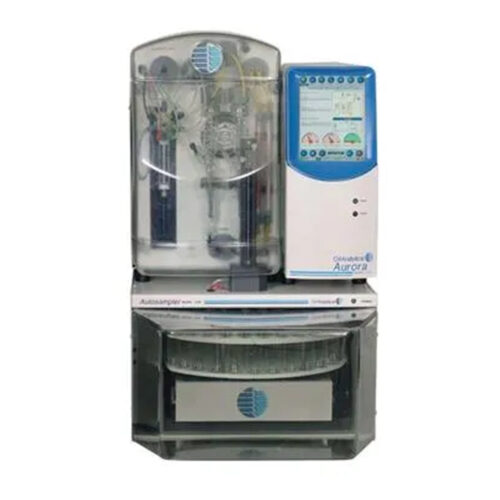 The Aurora 1030 line of TOC analyzers from OI Analytical includes instrument configurations for laboratory and process monitoring, employing 100 °C persulfate wet oxidation or thermal combustion techniques. The Aurora 1030 line incorporates several noteworthy innovations and can be equipped with parallel reactors allowing concurrent sample processing for increased analytical throughput. The unique 1030D Dual Mode TOC analyzer allows sample processing by wet oxidation or thermal combustion using the same instrument.
The Aurora 1030 line of TOC analyzers from OI Analytical includes instrument configurations for laboratory and process monitoring, employing 100 °C persulfate wet oxidation or thermal combustion techniques. The Aurora 1030 line incorporates several noteworthy innovations and can be equipped with parallel reactors allowing concurrent sample processing for increased analytical throughput. The unique 1030D Dual Mode TOC analyzer allows sample processing by wet oxidation or thermal combustion using the same instrument. -
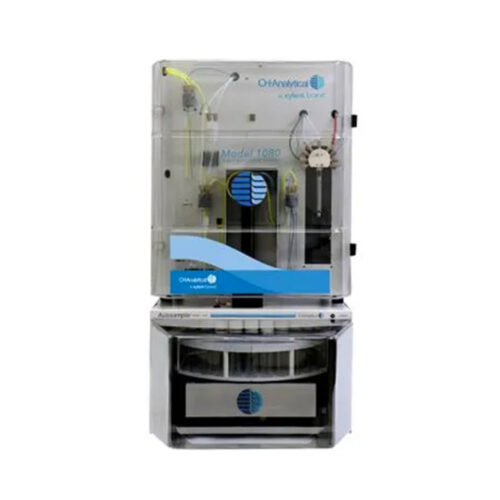 Total organic carbon (TOC) measurement is a well-established technique that provides valuable information about water quality for process control and regulatory compliance. Though high-temperature combustion TOC has been shown to be very effective for the analysis of samples that are of high molecular weight or contain substantial amounts of salt or difficult-to oxidize organics (e.g, humic acid), these types of samples are problematic for combustion TOC analyzers.
Total organic carbon (TOC) measurement is a well-established technique that provides valuable information about water quality for process control and regulatory compliance. Though high-temperature combustion TOC has been shown to be very effective for the analysis of samples that are of high molecular weight or contain substantial amounts of salt or difficult-to oxidize organics (e.g, humic acid), these types of samples are problematic for combustion TOC analyzers.
